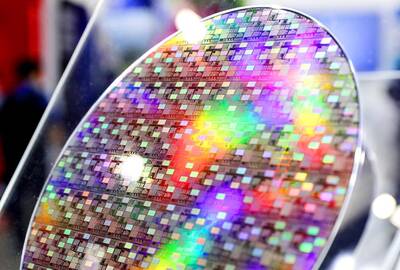Investors in Asia reacted cautiously yesterday to the latest plan by the US Federal Reserve to unblock credit markets, with stock markets in the region showing mixed fortunes.
The gloomy outlook for the global economy weighed on sentiment, prompting profit-taking in some markets despite the Fed’s announcement that it would buy as much as US$800 billion in mortgage and asset-backed securities.
“The massive injection plan by the Fed is something that should have been done by the government in the first place,” said Seiichi Suzuki, a strategist at Tokai Tokyo Securities. “This is what investors had expected in the grim situation.”
Tokyo’s Nikkei-225 index ended 1.3 percent lower, weighed down by concerns about a stronger yen, and Sydney slipped 2.3 percent. But Seoul closed up 4.7 percent and Hong Kong’s Hang Seng was 3.4 percent higher by lunch.
Adding to jitters in Tokyo, Fitch Ratings downgraded Toyota Motor Corp by two notches to AA, warning that in the current slump “even the strongest player” no longer deserved its top rating.
In China, hundreds of laid off workers rioted amid a dispute over severance pay, smashing offices of a toy factory and clashing with police, state media said yesterday.
The unrest on Tuesday night in Guangdong Province, the heartland of China’s export-oriented light industry, was the latest in a series of protests that have flared up amid rising unemployment linked to the global economic crisis.
In a wobbly session on Wall Street on Tuesday, the Dow Jones Industrial Average rose 0.43 percent but the tech-heavy NASDAQ fell 0.50 percent.
The Commerce Department reported the US economy shrank at a 0.5 percent pace in the third quarter, in a revised estimate for gross domestic product that many analysts say is the start of a steep downturn.
In Brussels, draft legislation set to be unveiled Wednesday called for a “significant” two-year stimulus campaign to jolt embattled EU economies out of recession.
“Only through a significant stimulus package can Europe counter the expected downward trend in demand, with its negative knock-on effects on investments and employment,” the draft document said.
The draft did not say how much the stimulus package could be worth but commission chief Jose Manuel Barroso has said it should be at least about 130 billion euros (US$170 billion).
France for its part plans to inject 19 billion euros into key industries as part of a stimulus package to kick-start the French economy, Finance Minister Christine Lagarde said.
The dollar edged down against the yen as traders mulled the new push by the Fed to unfreeze credit markets — a move that unsettled some traders.
“It left us wondering if the Fed needs to do this much,” said Kenichi Yumoto, vice president of forex trading at Societe Generale. The dollar eased to ¥94.97 in Tokyo afternoon trade, down from ¥95.24 in New York late on Tuesday. The euro dropped to US$1.2969 from US$1.3063 and to ¥123.66 from ¥124.45.

WAITING GAME: The US has so far only offered a ‘best rate tariff,’ which officials assume is about 15 percent, the same as Japan, a person familiar with the matter said Taiwan and the US have completed “technical consultations” regarding tariffs and a finalized rate is expected to be released soon, Executive Yuan spokeswoman Michelle Lee (李慧芝) told a news conference yesterday, as a 90-day pause on US President Donald Trump’s “reciprocal” tariffs is set to expire today. The two countries have reached a “certain degree of consensus” on issues such as tariffs, nontariff trade barriers, trade facilitation, supply chain resilience and economic security, Lee said. They also discussed opportunities for cooperation, investment and procurement, she said. A joint statement is still being negotiated and would be released once the US government has made

‘CRUDE’: The potential countermeasure is in response to South Africa renaming Taiwan’s representative offices and the insistence that it move out of Pretoria Taiwan is considering banning exports of semiconductors to South Africa after the latter unilaterally downgraded and changed the names of Taiwan’s two representative offices, the Ministry of Foreign Affairs (MOFA) said yesterday. On Monday last week, the South African Department of International Relations and Cooperation unilaterally released a statement saying that, as of April 1, the Taipei Liaison Offices in Pretoria and Cape Town had been renamed the “Taipei Commercial Office in Johannesburg” and the “Taipei Commercial Office in Cape Town.” Citing UN General Assembly Resolution 2758, it said that South Africa “recognizes the People’s Republic of China (PRC) as the sole

NEW GEAR: On top of the new Tien Kung IV air defense missiles, the military is expected to place orders for a new combat vehicle next year for delivery in 2028 Mass production of Tien Kung IV (Sky Bow IV) missiles is expected to start next year, with plans to order 122 pods, the Ministry of National Defense’s (MND) latest list of regulated military material showed. The document said that the armed forces would obtain 46 pods of the air defense missiles next year and 76 pods the year after that. The Tien Kung IV is designed to intercept cruise missiles and ballistic missiles to an altitude of 70km, compared with the 60km maximum altitude achieved by the Missile Segment Enhancement variant of PAC-3 systems. A defense source said yesterday that the number of

Taiwanese exports to the US are to be subject to a 20 percent tariff starting on Thursday next week, according to an executive order signed by US President Donald Trump yesterday. The 20 percent levy was the same as the tariffs imposed on Vietnam, Sri Lanka and Bangladesh by Trump. It was higher than the tariffs imposed on Japan, South Korea and the EU (15 percent), as well as those on the Philippines (19 percent). A Taiwan official with knowledge of the matter said it is a "phased" tariff rate, and negotiations would continue. "Once negotiations conclude, Taiwan will obtain a better